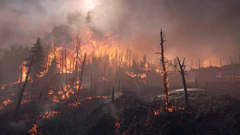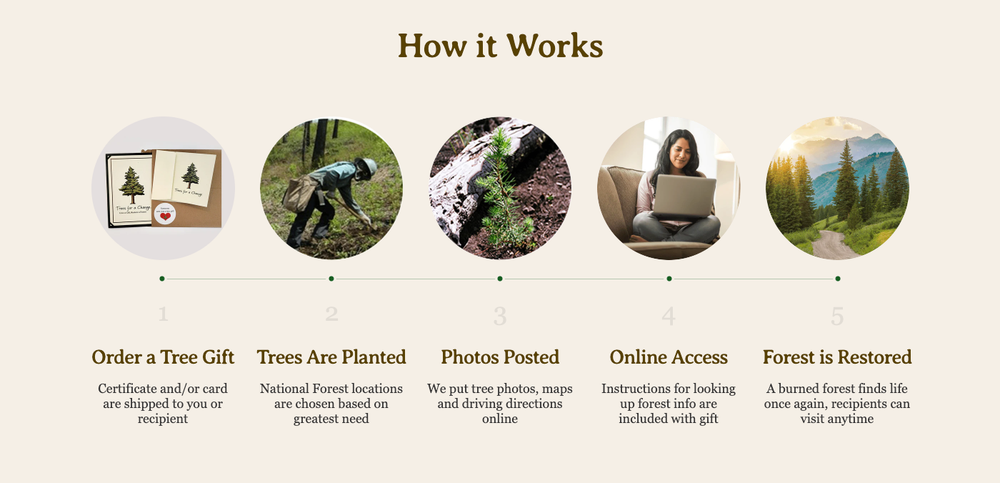
October 15, 2019
|
August 2021 It's wildfire season, and there are fires burning all over the U.S. right now, so we thought we'd answer some frequently asked questions about forest fire restoration.
 Isn't fire good for a forest sometimes?
Yes, in a healthy forest, a fire will clear out a lot of brush and smaller trees and leave the older, more established trees standing and thriving with less competition for resources. But in an overgrown forest that is dry and dense, fires can completely obliterate trees and pine cones.
What is a "healthy forest?"
In a healthy forest, the trees have proper spacing so they get plenty of water and sunshine to thrive. Fire suppression practices of the past (we used to think all fire was bad and we tried to put them all out) have led to more dense forests. And, climate change and drought have dried out our trees so some of our forests are now more susceptible to disease and fire devastation.
Why do some forests regrow themselves after a fire and some don't?
If pinecones managed to survive the fire, then trees will likely be able to grow on their own in that area eventually. However, if the fire got hot enough to destroy most of the pinecones, then the area will need help with restoration as the trees won't be able to regrow on their own.
Don't some pinecones need fire to open up and distribute seeds?
Yes, these are called serotinous cones and they require high temperatures to melt the waxy coating on the cones and open them. However, even serotinous cones can be destroyed in very high temperature fires.
Why is it important to restore fire burned areas through Trees for a Change?
Our trees are always planted in areas the U.S. Forest Service has specifically designated for restoration, areas where the burned trees will not regenerate on their own. Our trees are planted and managed to become a healthy forest that will be less susceptible to fire devastation in the future. Healthy forests contribute greatly to our eco system and help fight climate change.
|
|
Every tree makes a difference!
|
Isn't fire good for a forest sometimes?
Yes, in a healthy forest, a fire will clear out a lot of brush and smaller trees and leave the older, more established trees standing and thriving with less competition for resources. But in an overgrown forest that is dry and dense, fires can completely obliterate trees and pine cones.
What is a "healthy forest?"
In a healthy forest, the trees have proper spacing so they get plenty of water and sunshine to thrive. Fire suppression practices of the past (we used to think all fire was bad and we tried to put them all out) have led to more dense forests. And, climate change and drought have dried out our trees so some of our forests are now more susceptible to disease and fire devastation.
Why do some forests regrow themselves after a fire and some don't?
If pinecones managed to survive the fire, then trees will likely be able to grow on their own in that area eventually. However, if the fire got hot enough to destroy most of the pinecones, then the area will need help with restoration as the trees won't be able to regrow on their own.
on't some pinecones need fire to open up and distribute seeds?
Yes, these are called serotinous cones and they require high temperatures to melt the waxy coating on the cones and open them. However, even serotinous cones can be destroyed in very high temperature fires.
Why is it important to restore fire burned areas through Trees for a Change?
Our trees are always planted in areas the U.S. Forest Service has specifically designated for restoration, areas where the burned trees will not regenerate on their own. Our trees are planted and managed to become a healthy forest that will be less susceptible to fire devastation in the future. Healthy forests contribute greatly to our eco system and help fight climate change.











